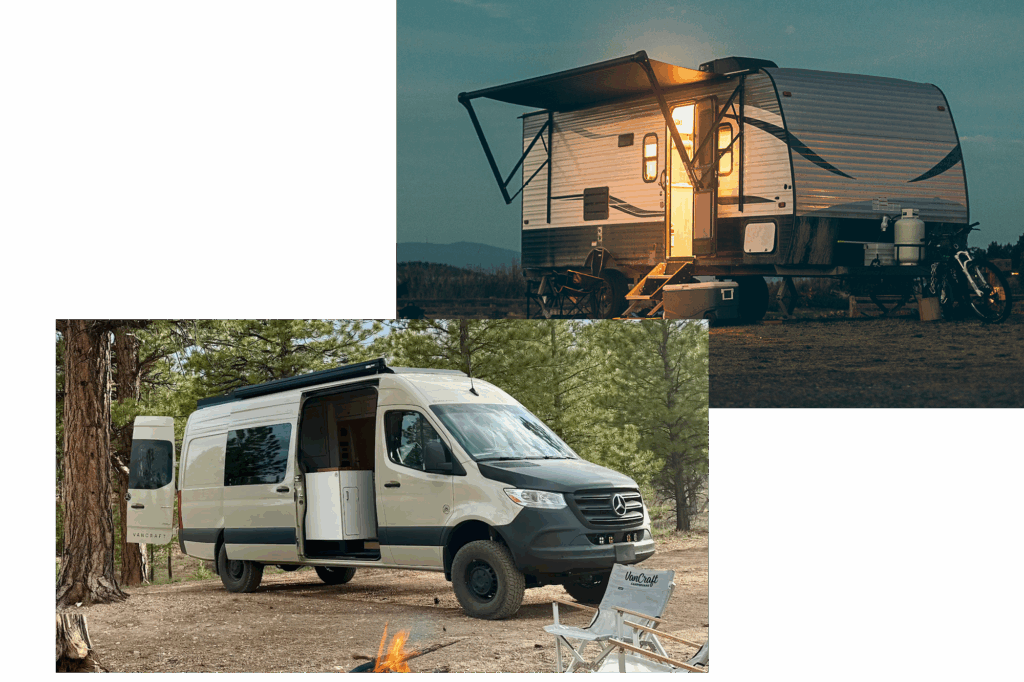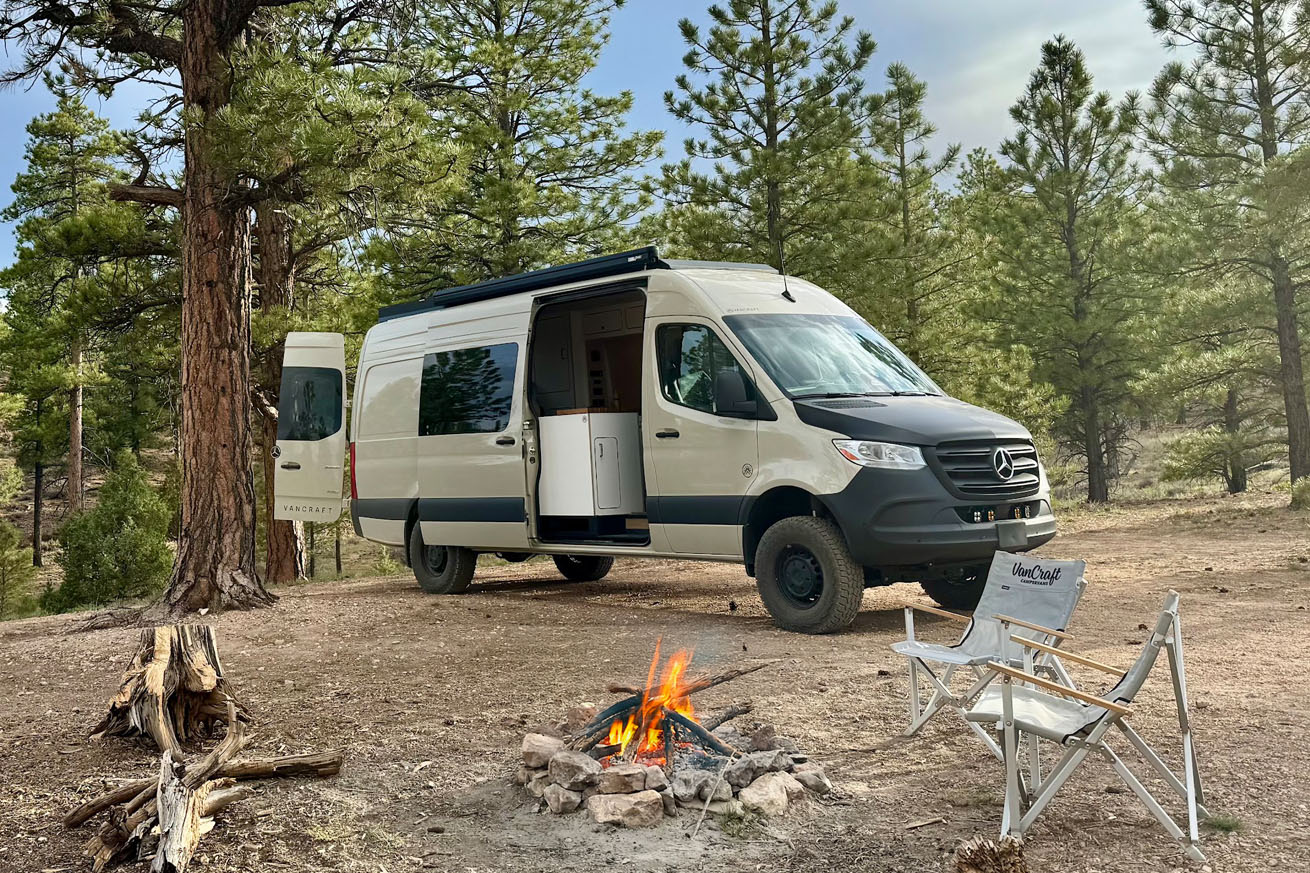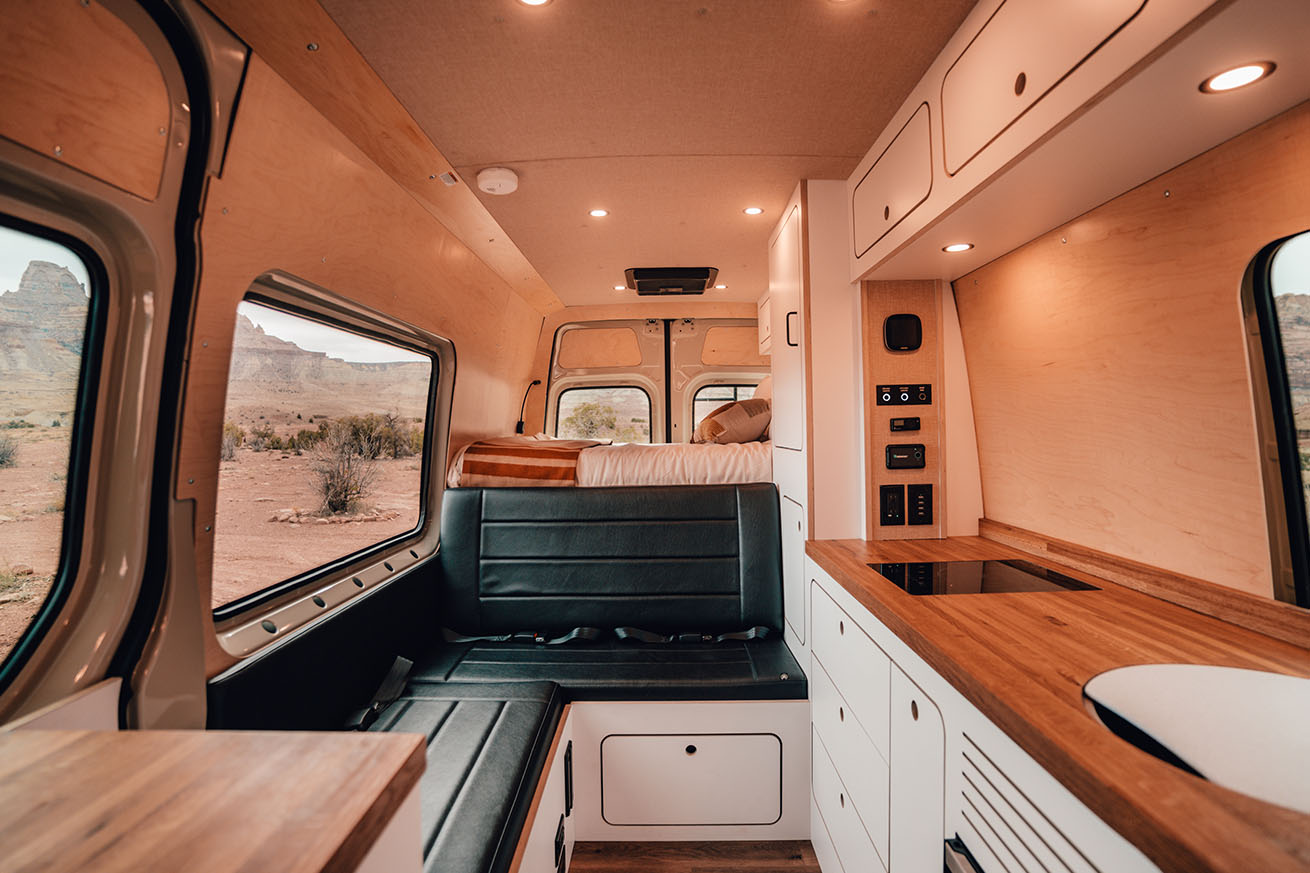
If you’ve been dreaming of hitting the road, you’ve probably found yourself Googling all the different types of RVs. At some point, you hit the term Class B, and now you’re wondering what the real difference is between a traditional RV and a campervan. Here’s the breakdown.
Here’s 6 things you need to know.
1. What is a Class B Campervan?

Class B vehicles are built on a standard van chassis and designed to be compact, nimble, and fully self-contained. Think of them as the minimalist cousin to the big Class A motorhomes. But don’t let the size fool you. A well-designed Class B, like a VanCraft campervan, has everything you need for serious off-grid adventures: bed, kitchen, solar power, water system, and yes, even a shower and toilet with the Allterra model.
2. Size and Driveability

Class B vehicles are built on a standard van chassis and designed to be compact, nimble, and fully self-contained. Think of them as the minimalist cousin to the big Class A motorhomes. But don’t let the size fool you. A well-designed Class B, like a VanCraft campervan, has everything you need for serious off-grid adventures: bed, kitchen, solar power, water system, and yes, on the Allterra model, you even get a shower and toilet.
3. Interior design and Features

Class B Strength:
What you lose in square footage, you gain in efficiency. VanCraft campervans are laid out with intention. There’s storage in all the right places, smart convertible furniture, and every square inch is working for you. It’s not sprawling, but it’s surprisingly comfortable and much easier to manage.
RV Benefits:
Bigger means more room for slide-outs, big couches, and separate bedrooms. For large families or folks planning to live full-time in one place, this can be appealing if you are going to an RV park or a driveway, but don’t try taking them off the beaten path.
4. Off-Grid Capabilities

Class B Advantage:
Class B vans shine when it comes to off-grid travel. They’re lighter, better insulated, and easier to power with solar. VanCraft models, for example, are designed to stay off-grid for days at a time with full water tanks, solar charging, and compact battery systems.
RV Limitations:
Larger rigs often rely on hookups for power and water. While there are off-grid capable RVs, they usually need more power and are less nimble when it comes to finding remote campsites.
5. Maintenance and Storage
Class B Simplicity:
Because they’re smaller and built on common van platforms, maintenance is more straightforward. Storage is easier too. You might be able to park it at home, which saves money and hassle.
RV Reality:
RVs can be expensive to store and require more specialized service. That means more things to repair and replace.

The Verdict: What Fits Your Life?
There’s no one-size-fits-all answer. If you want big space, multiple sleeping areas, and plan to stay put for long stretches, a full-size RV might be right for you. But if you’re looking for freedom, ease of travel, and a go-anywhere vehicle with everything you need, a Class B campervan like the ones VanCraft builds could be the smarter, more flexible choice.
Wherever the road takes you, make sure your rig fits your lifestyle, your travel goals, and your comfort zone. The best rig is the one that helps you say yes to the next adventure.
